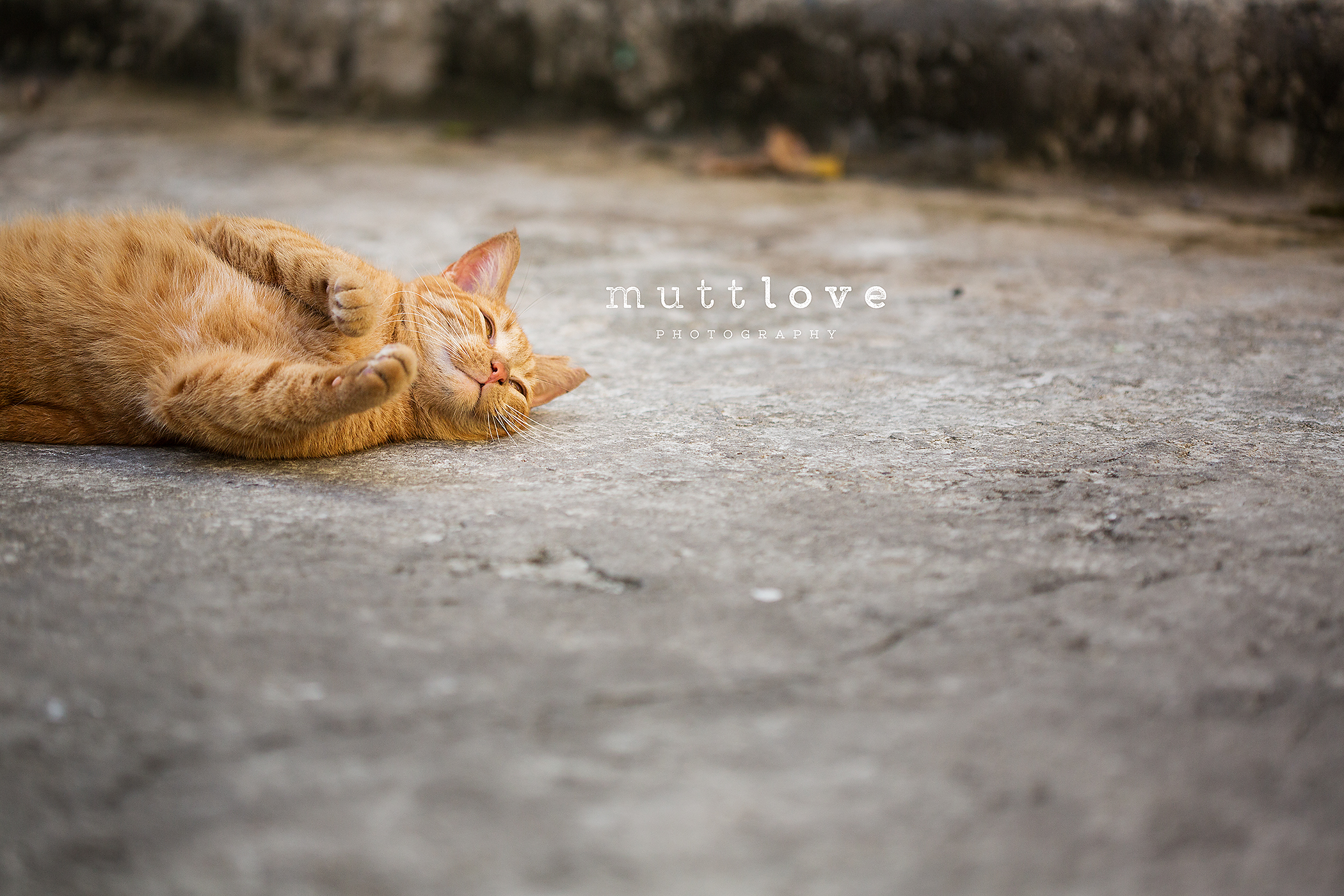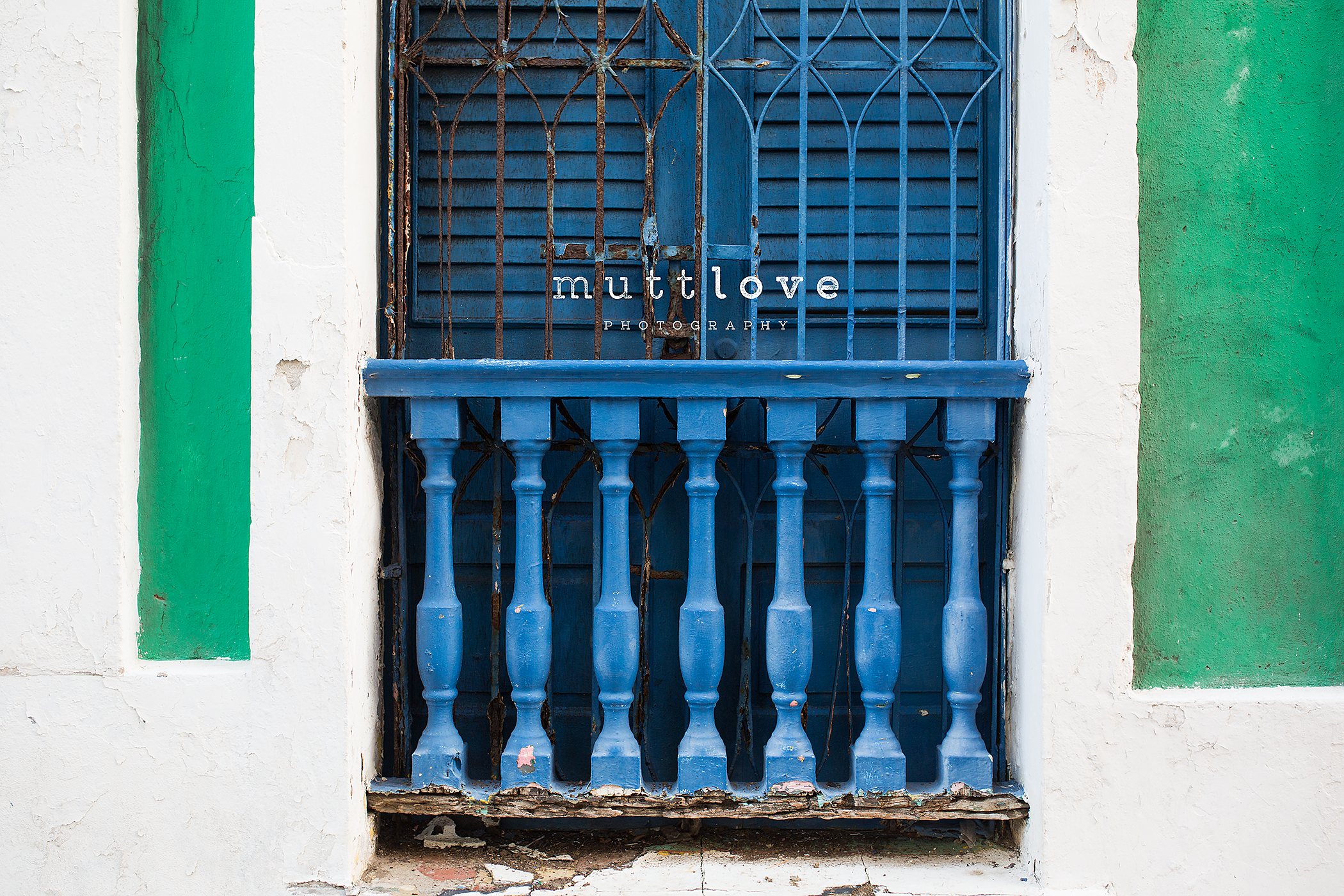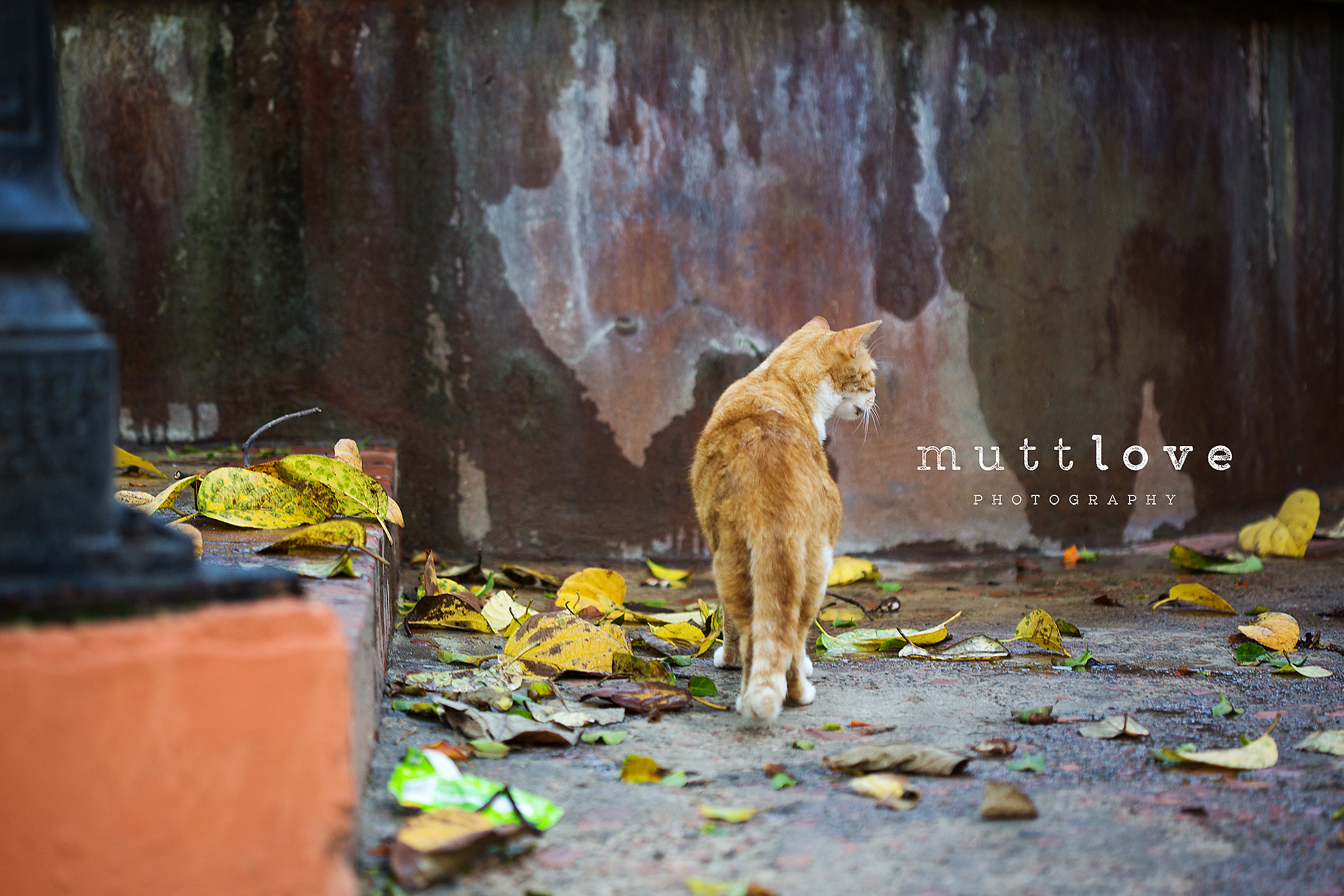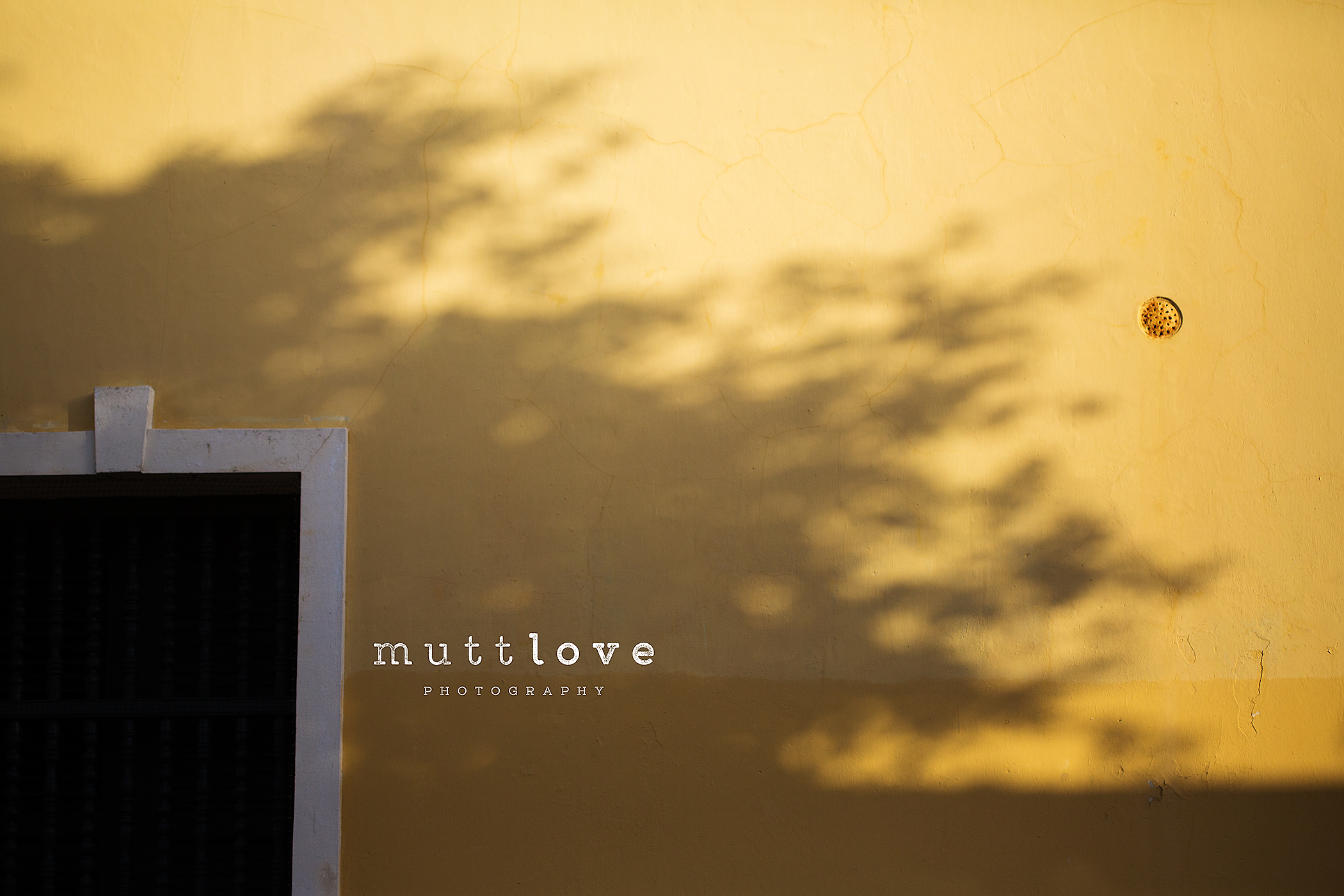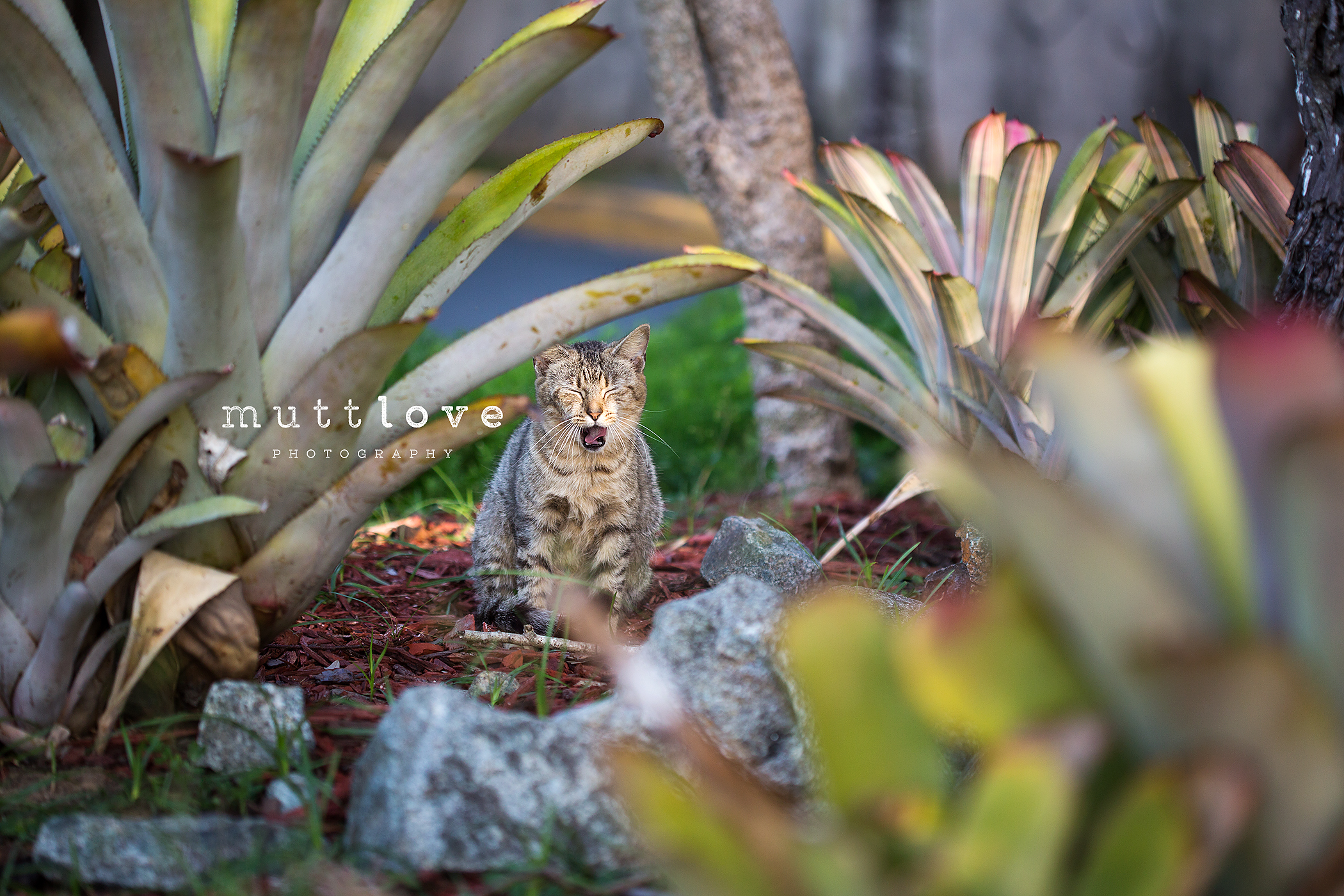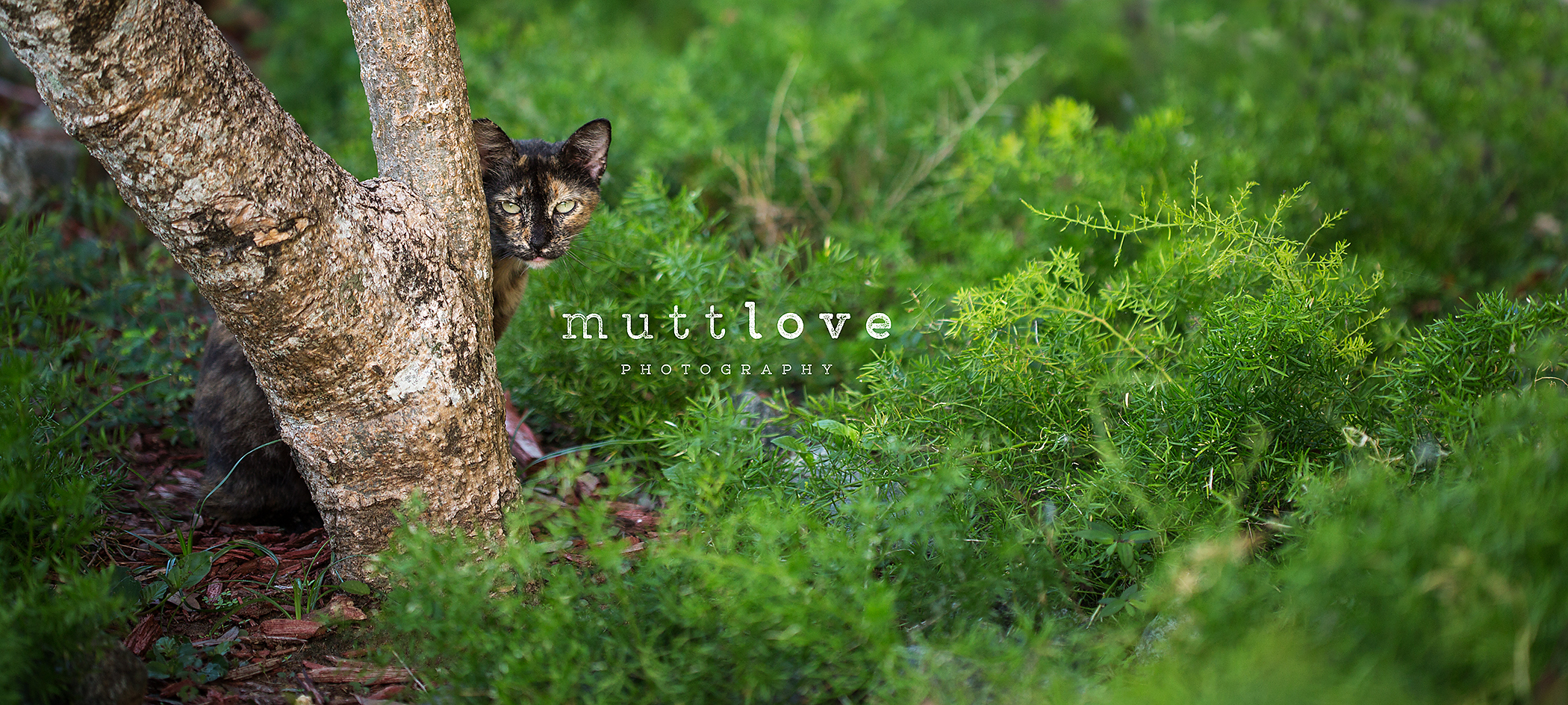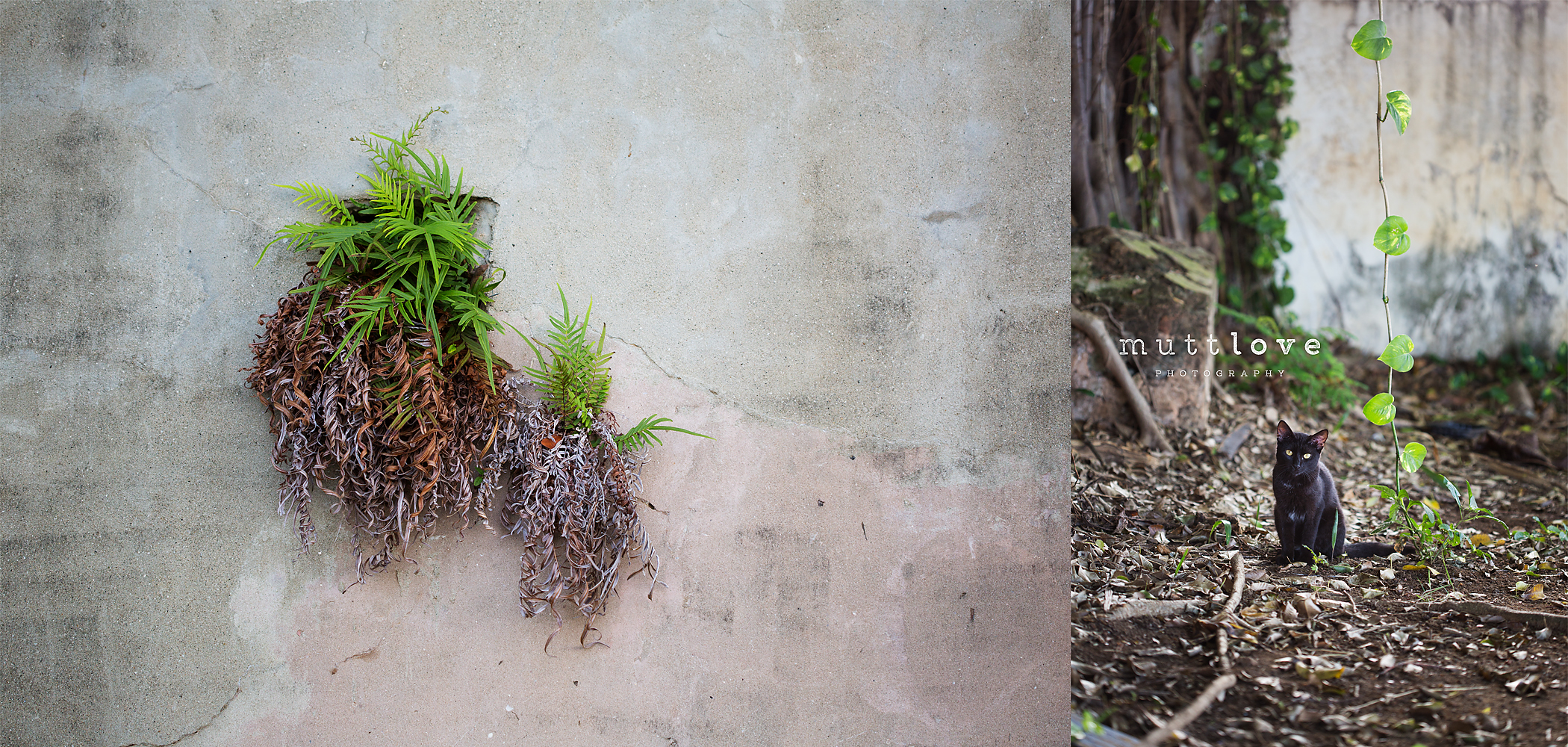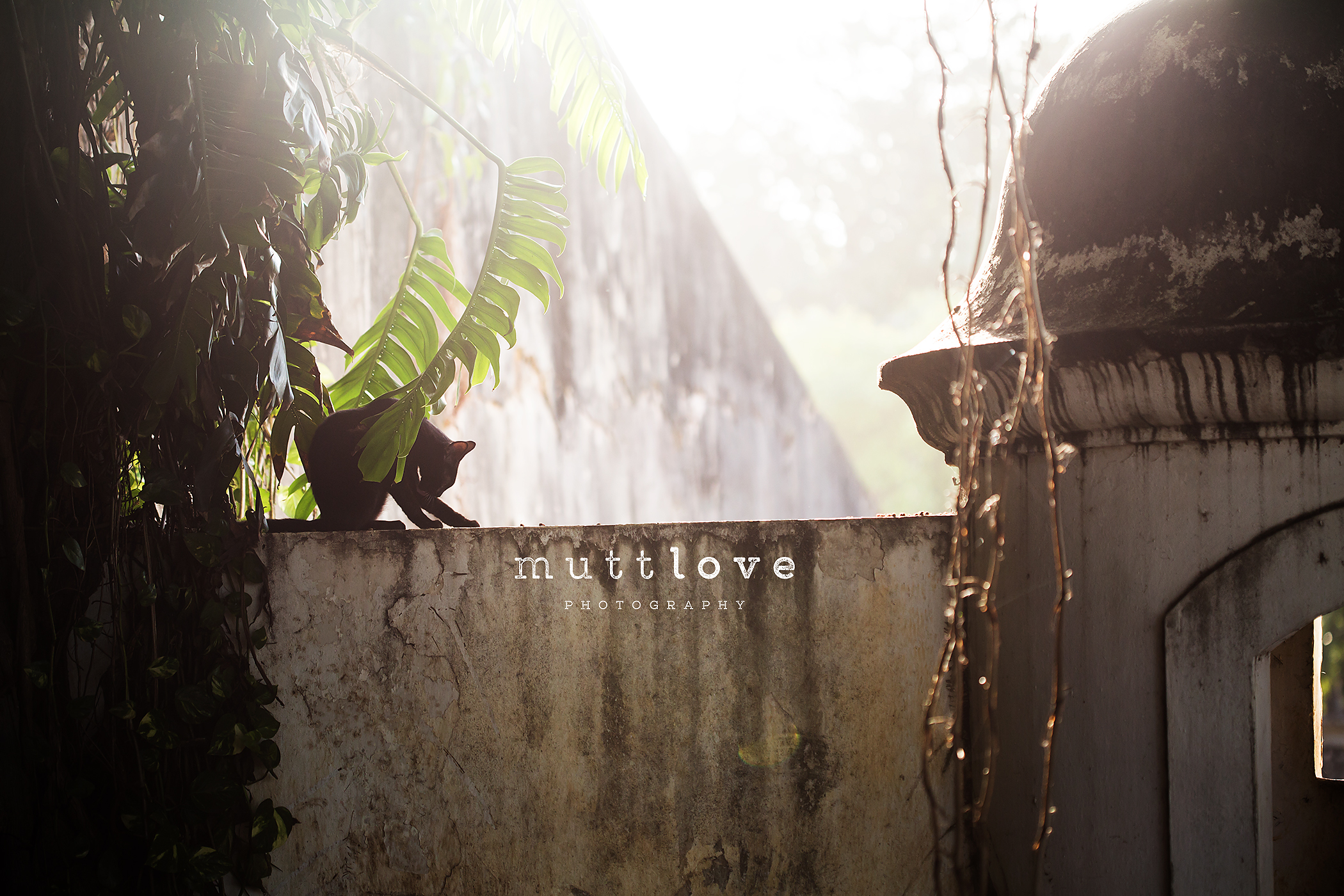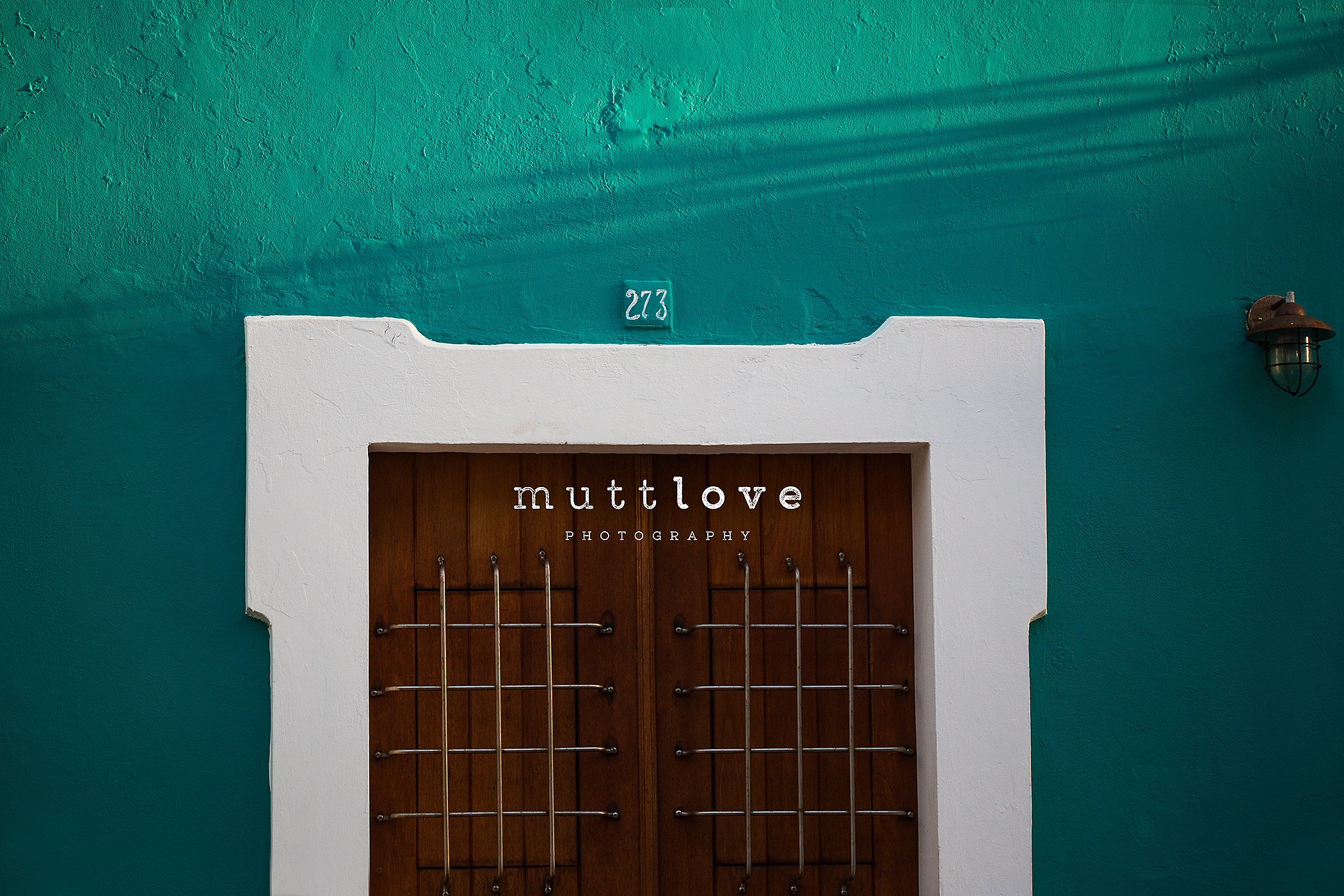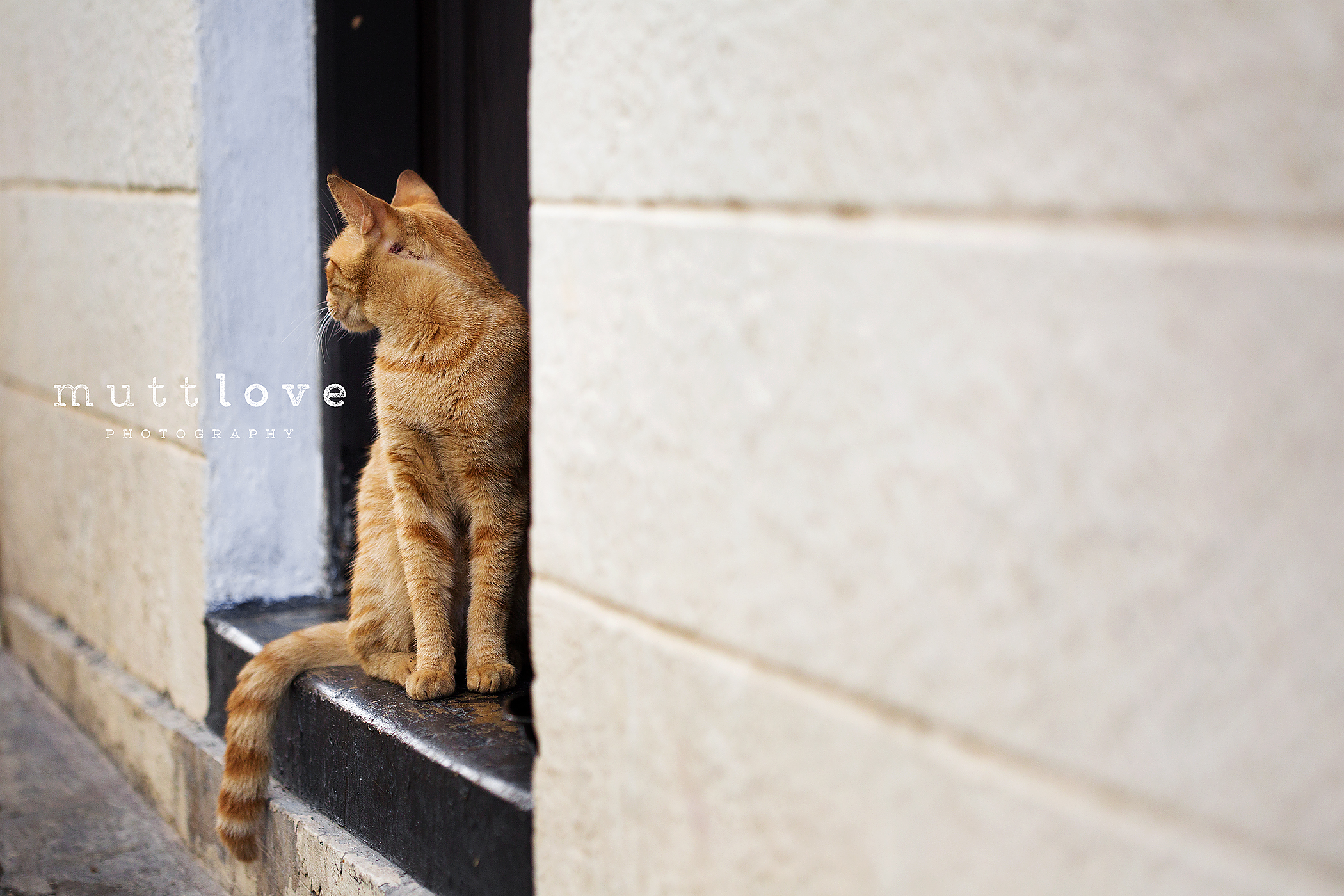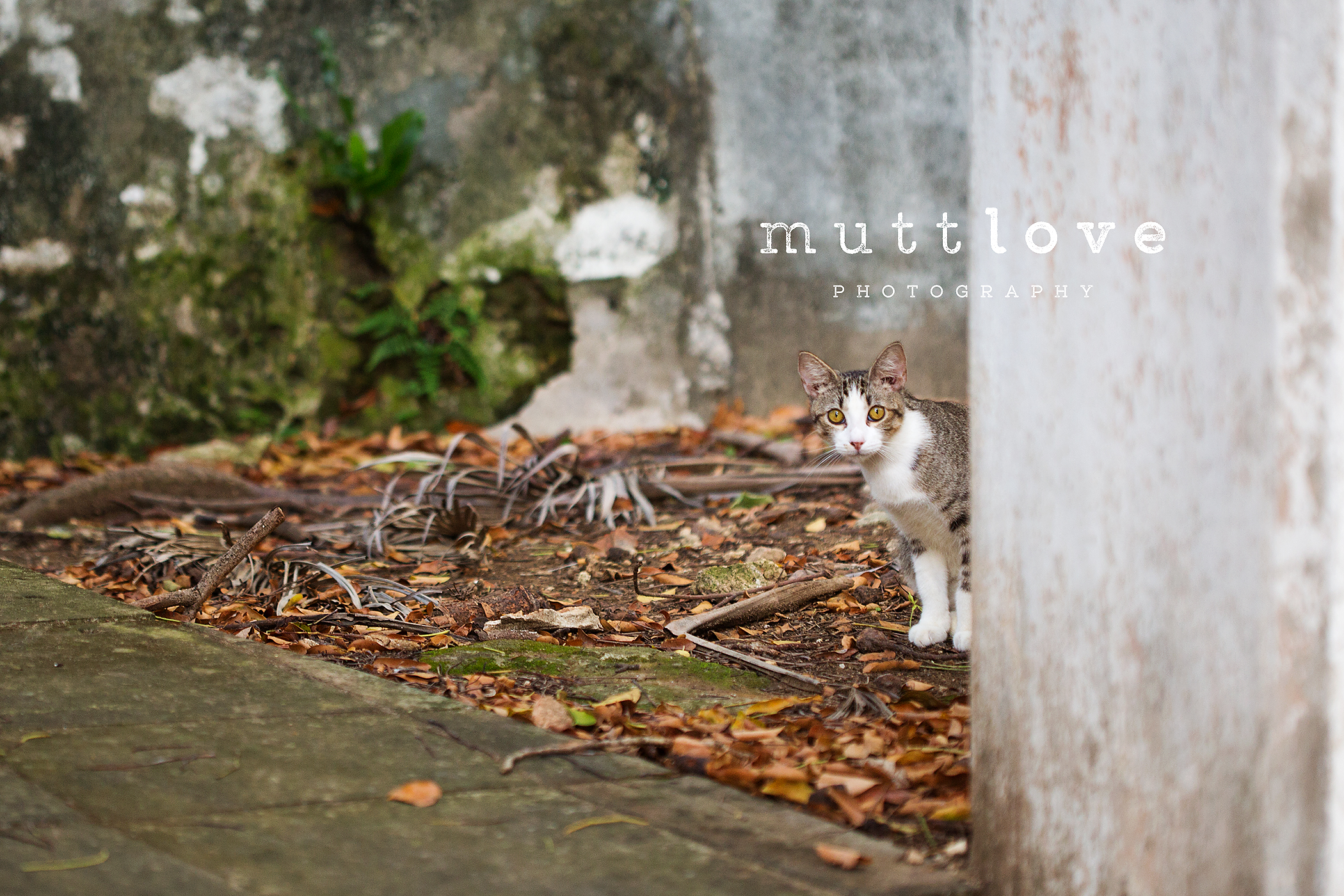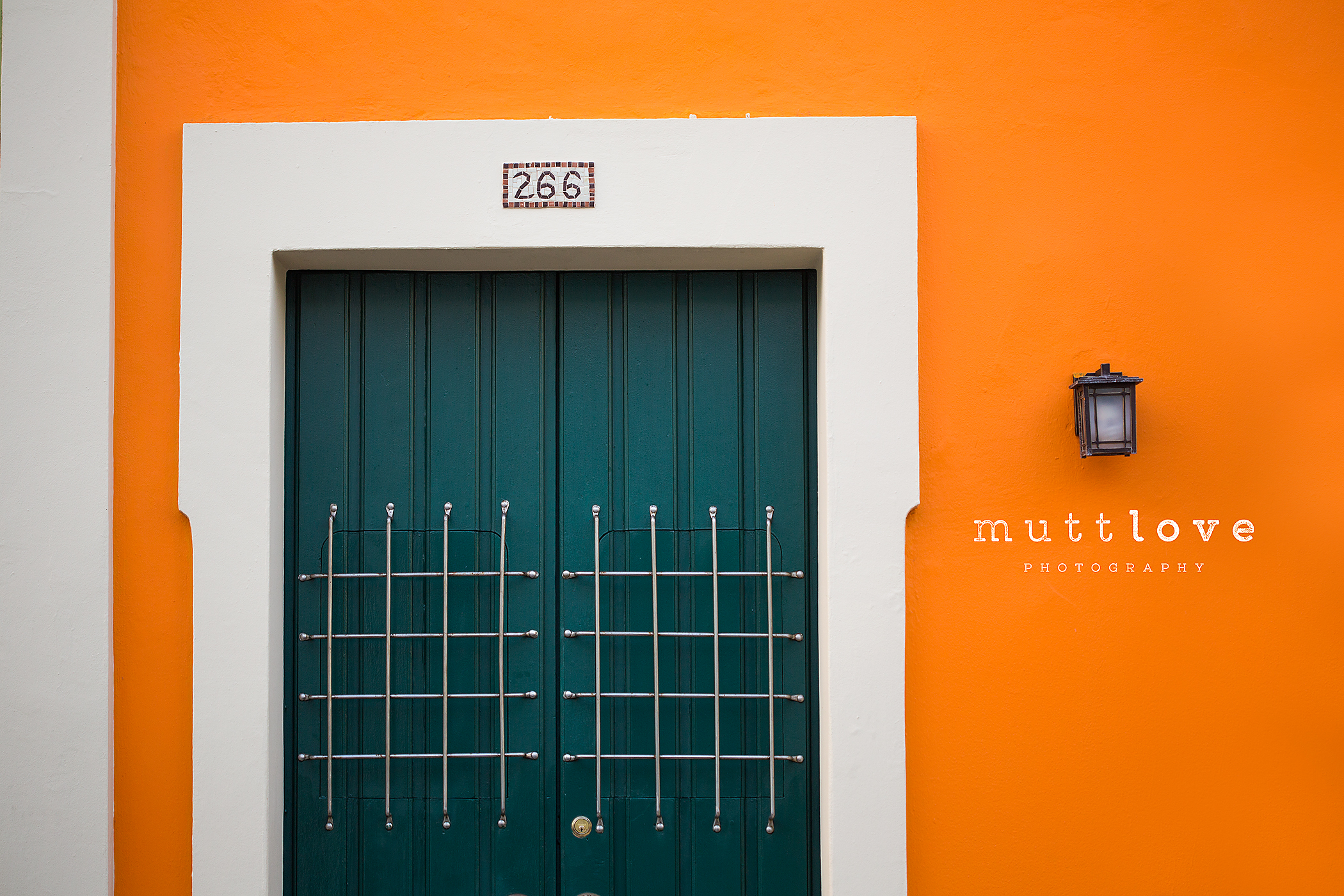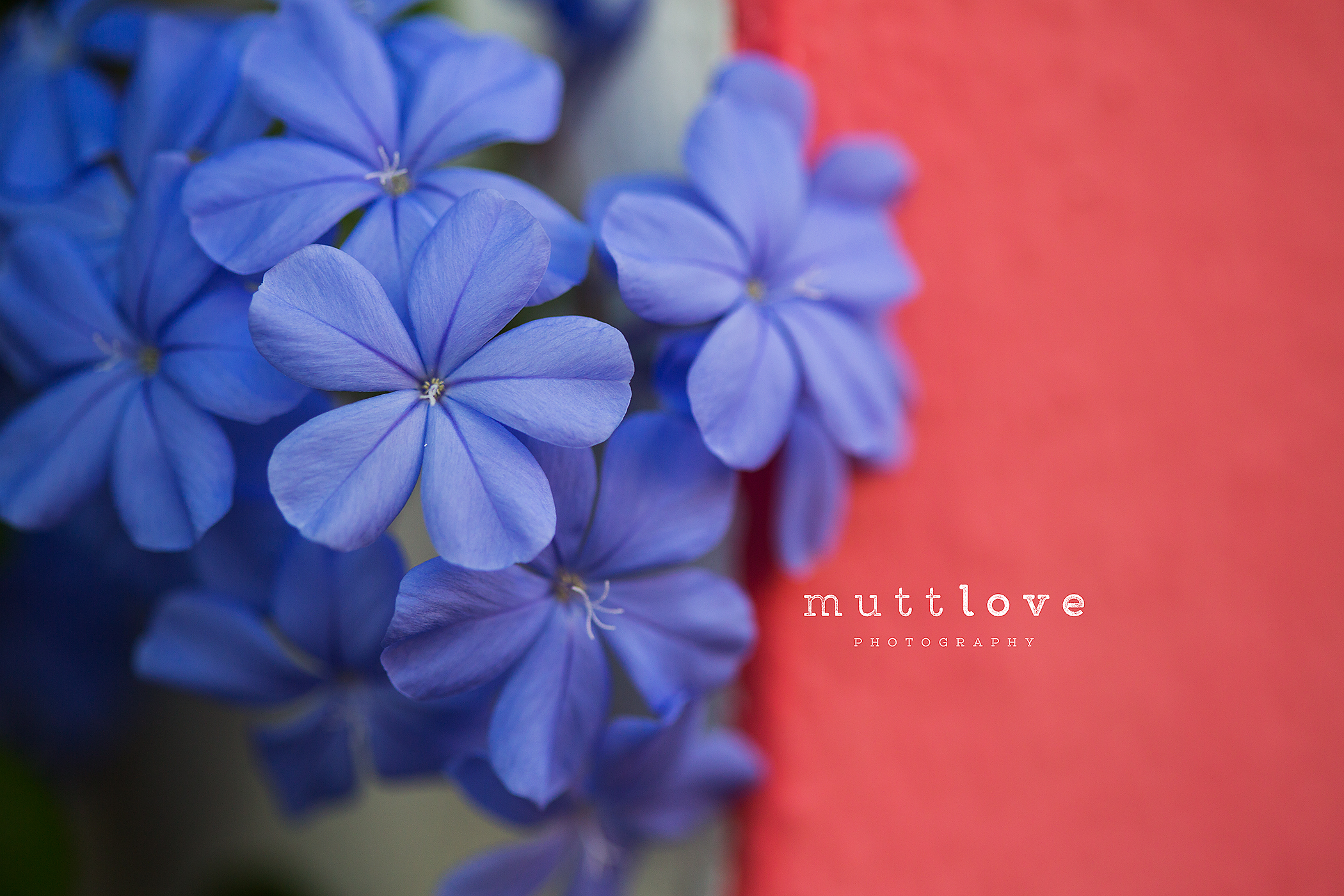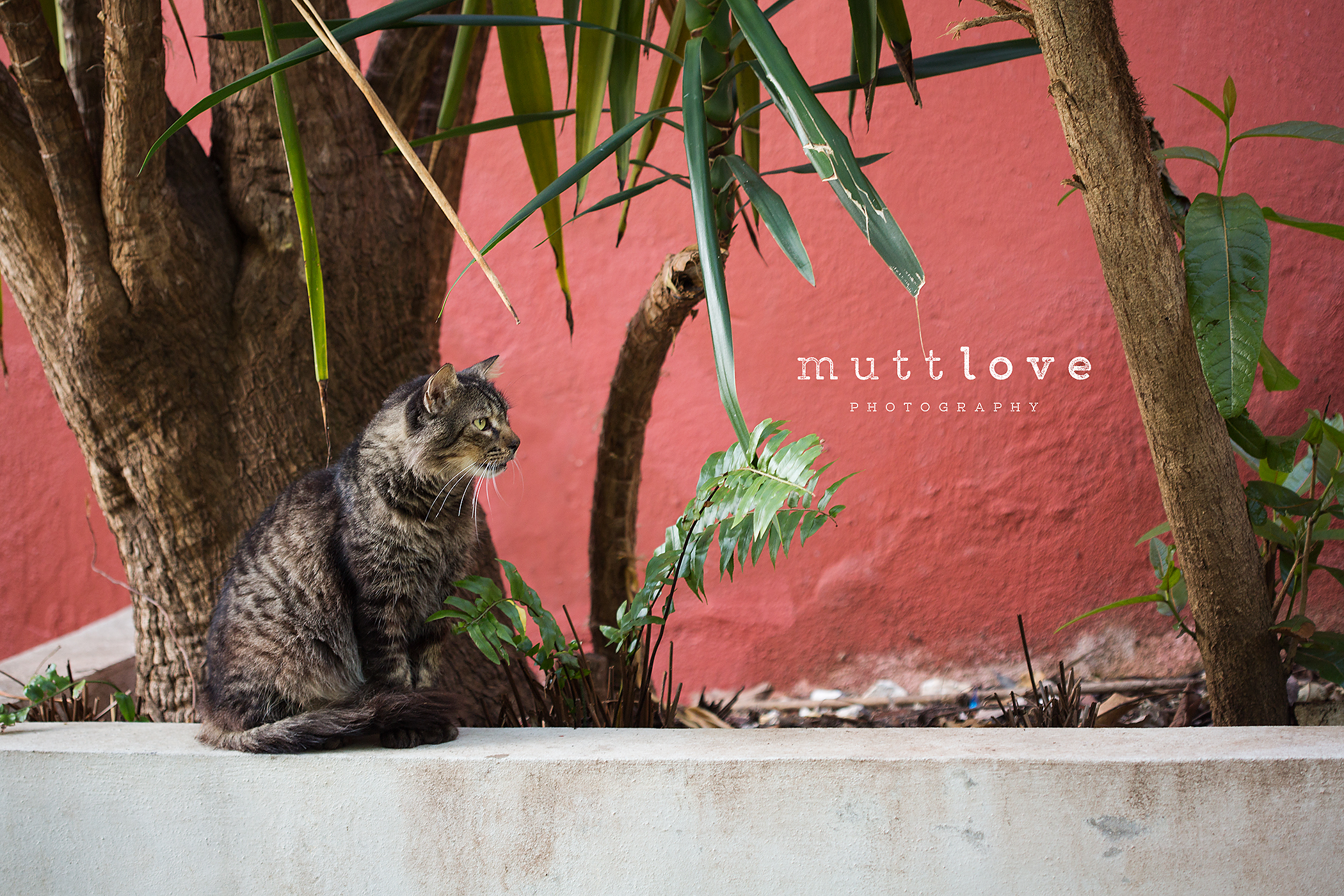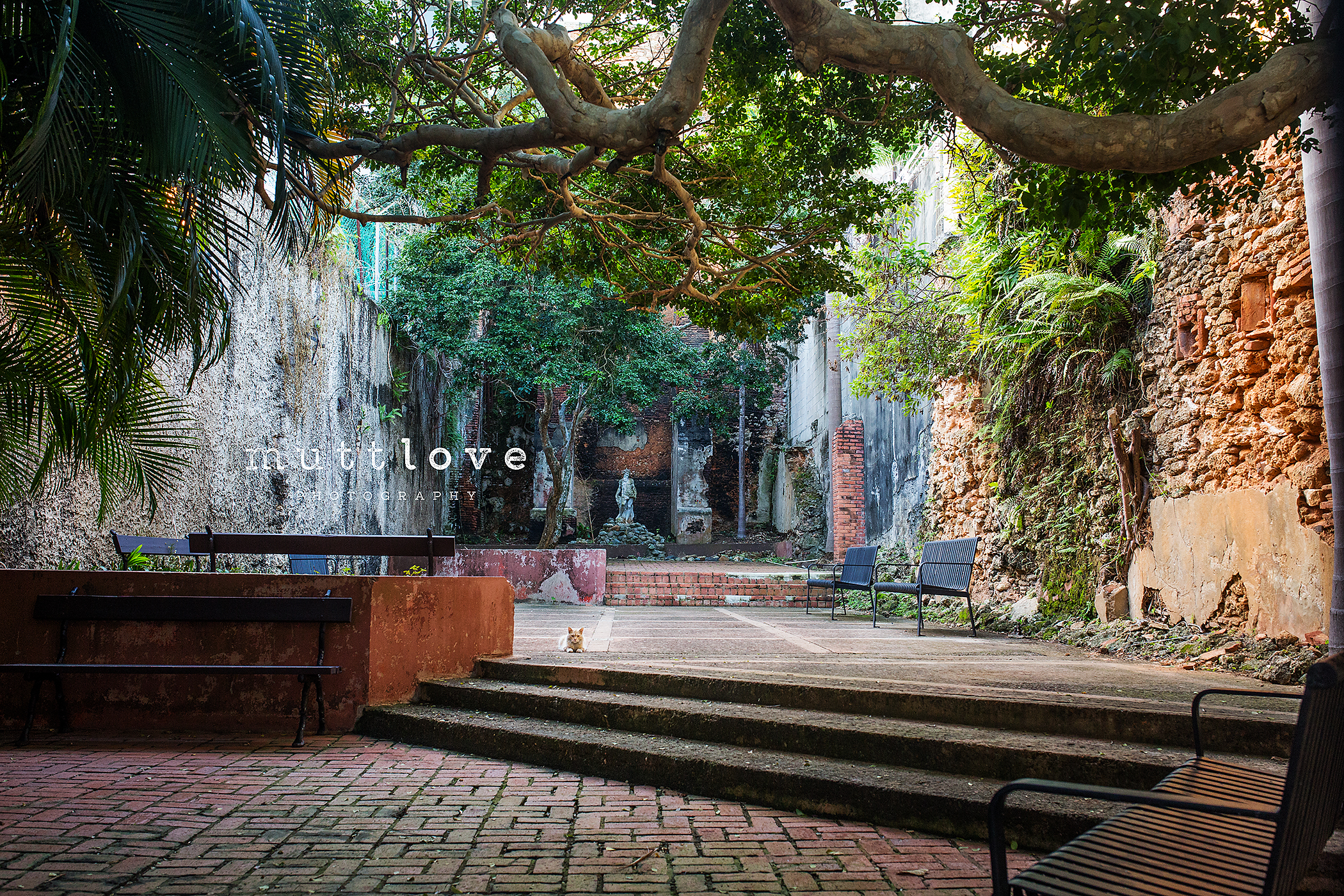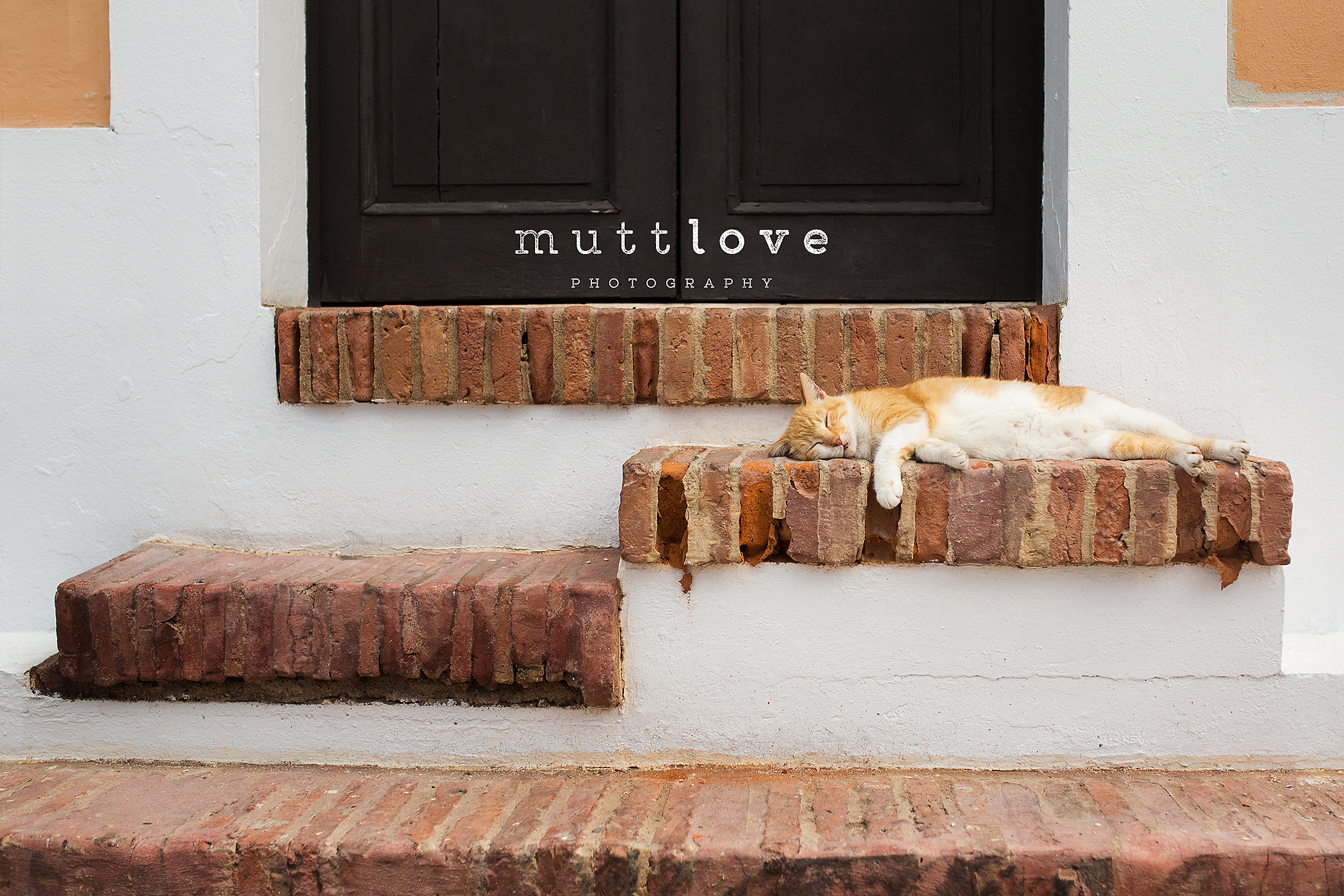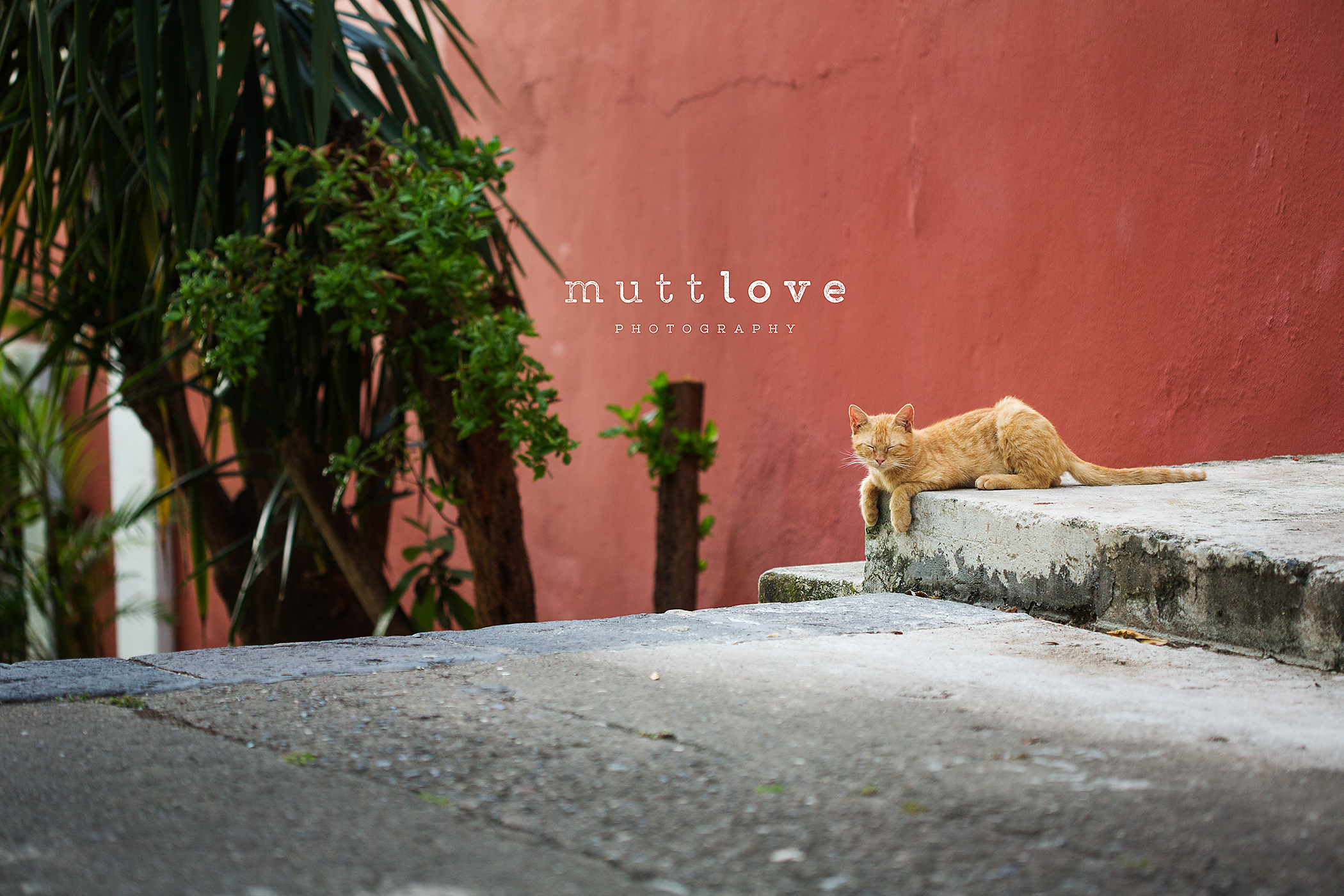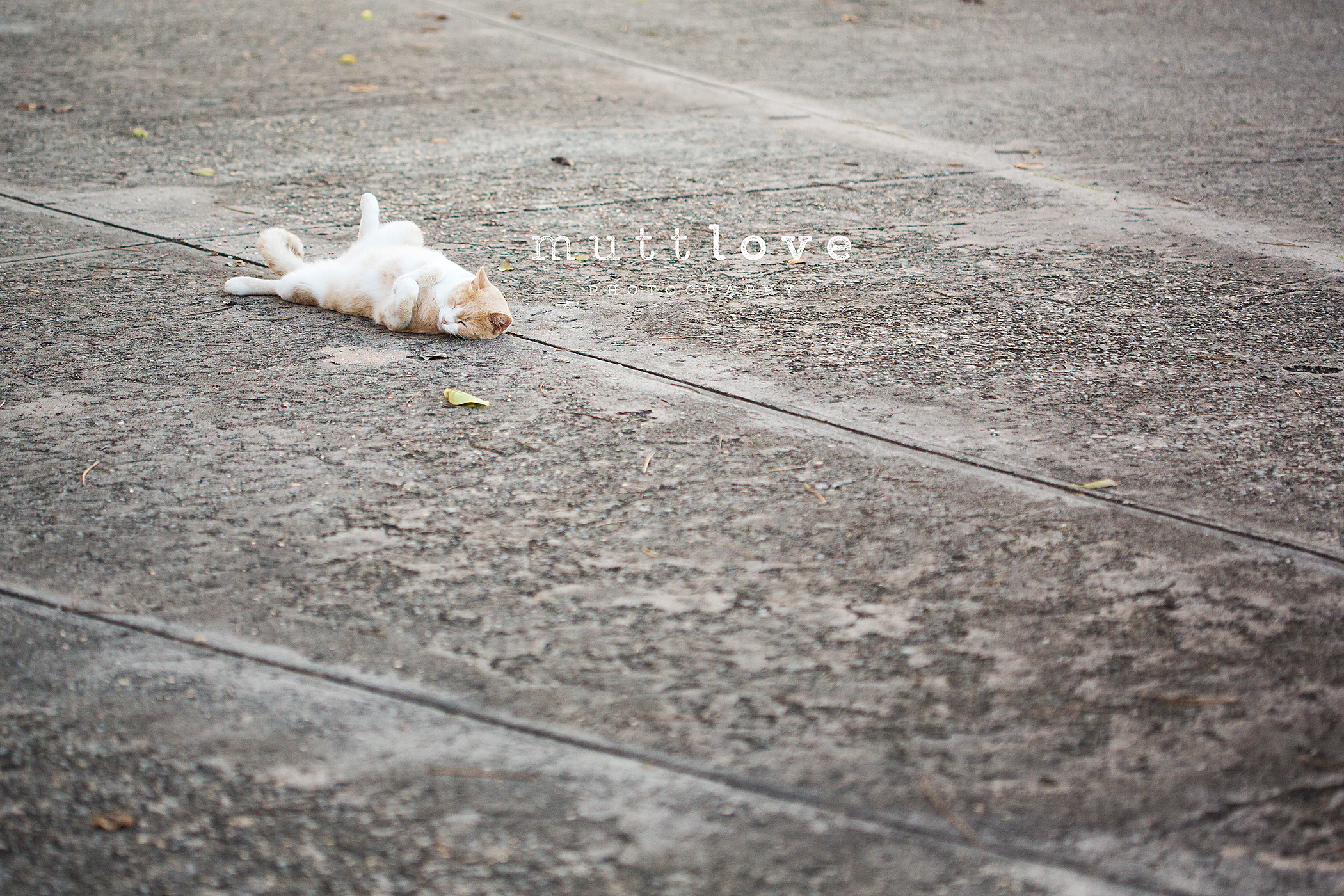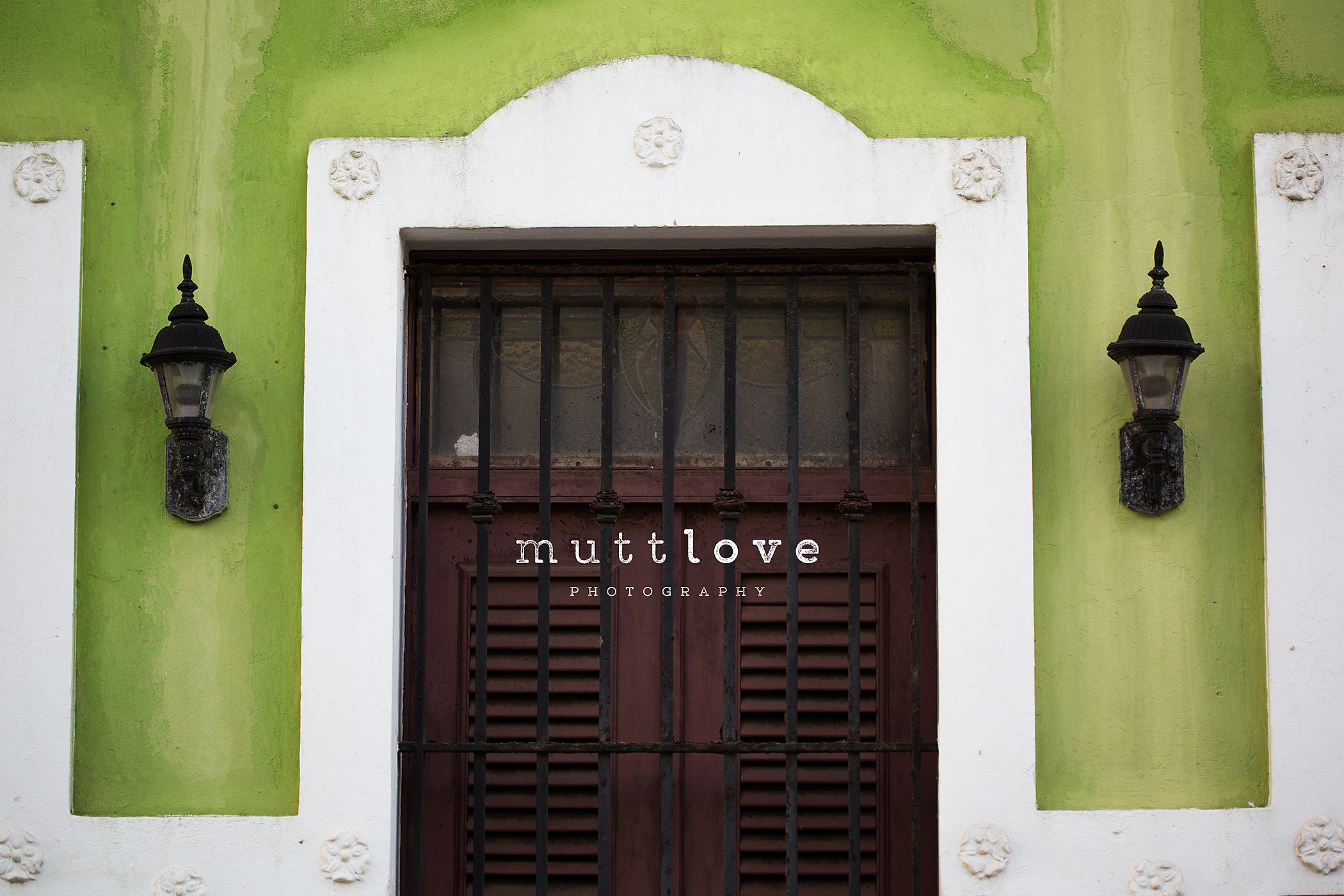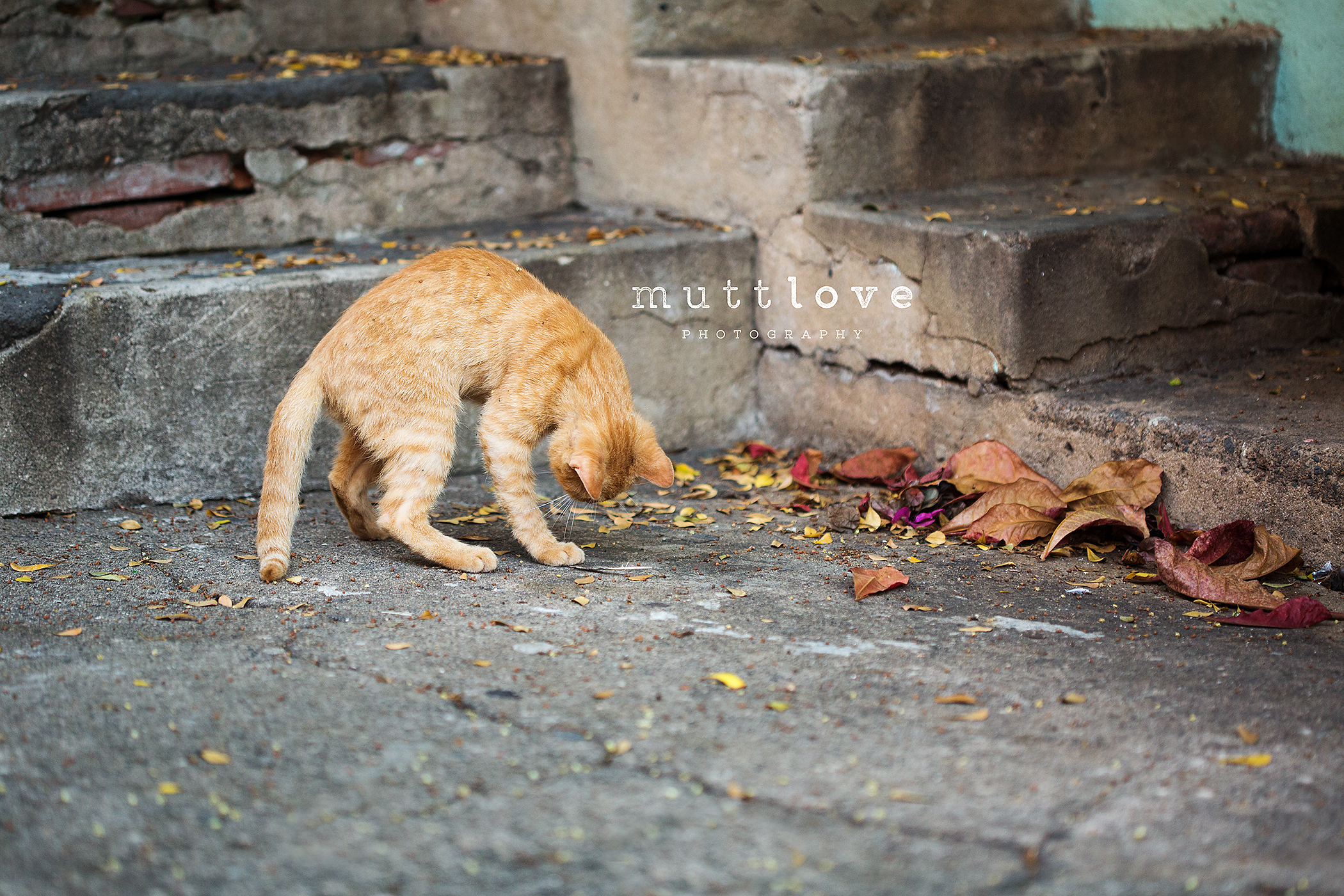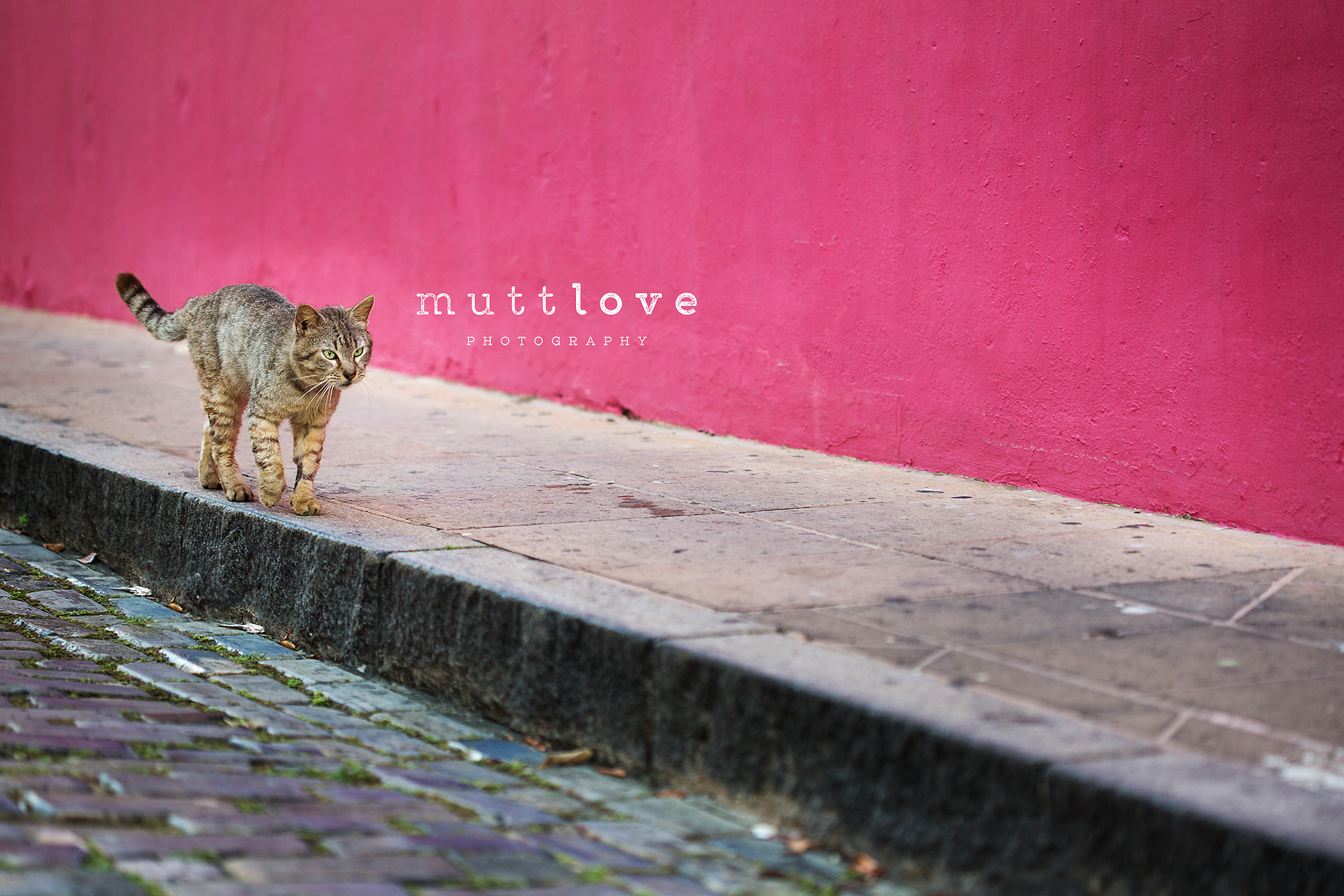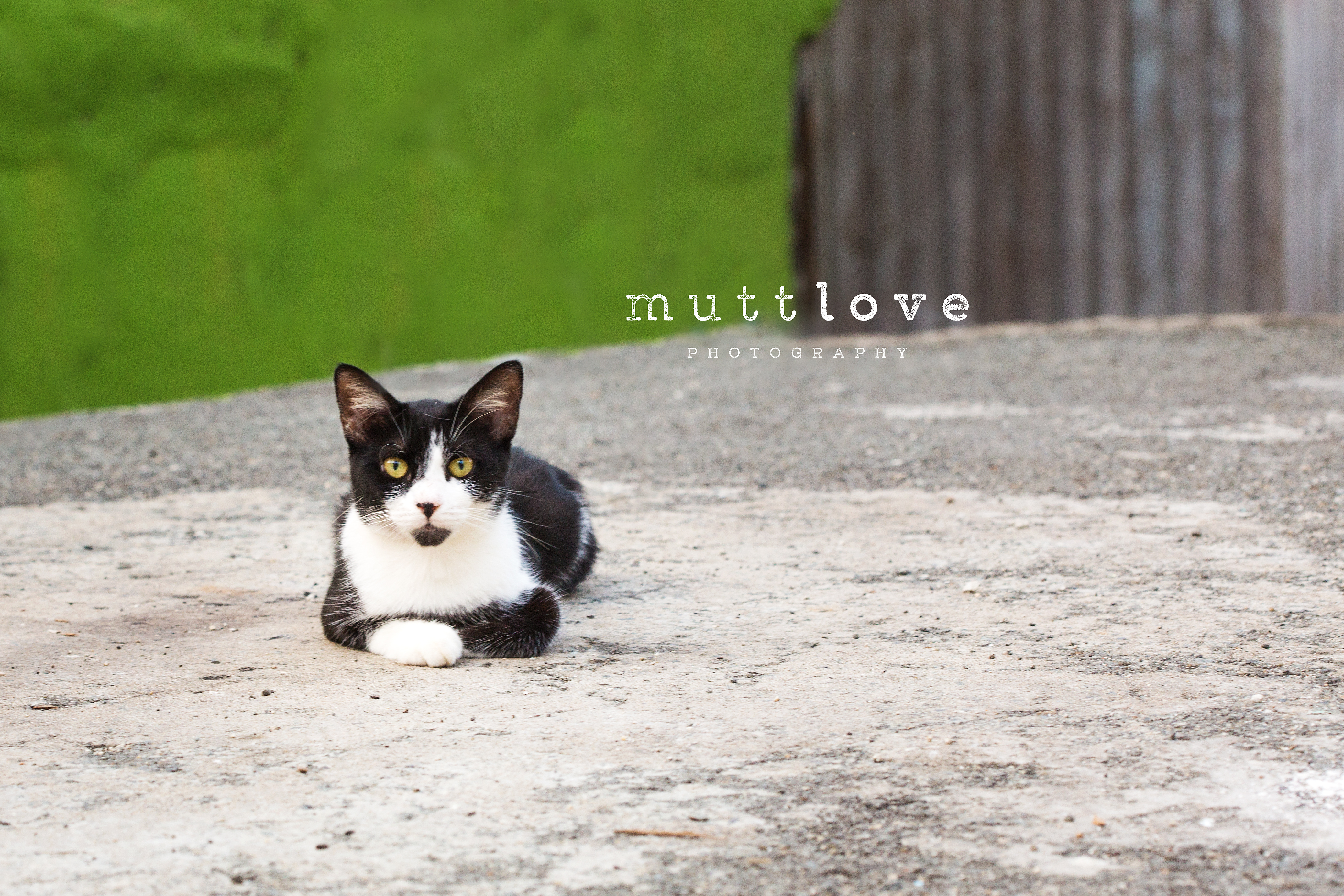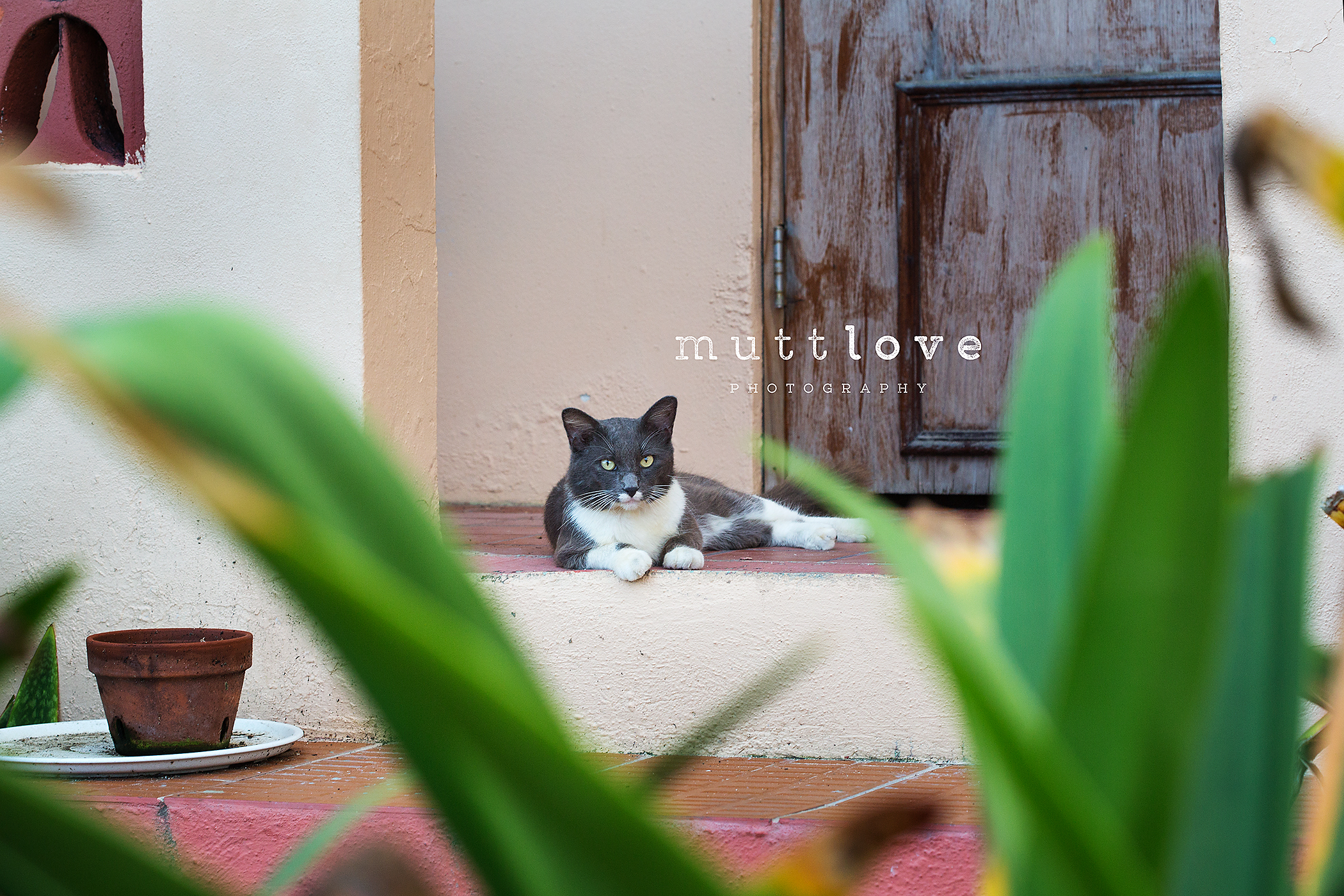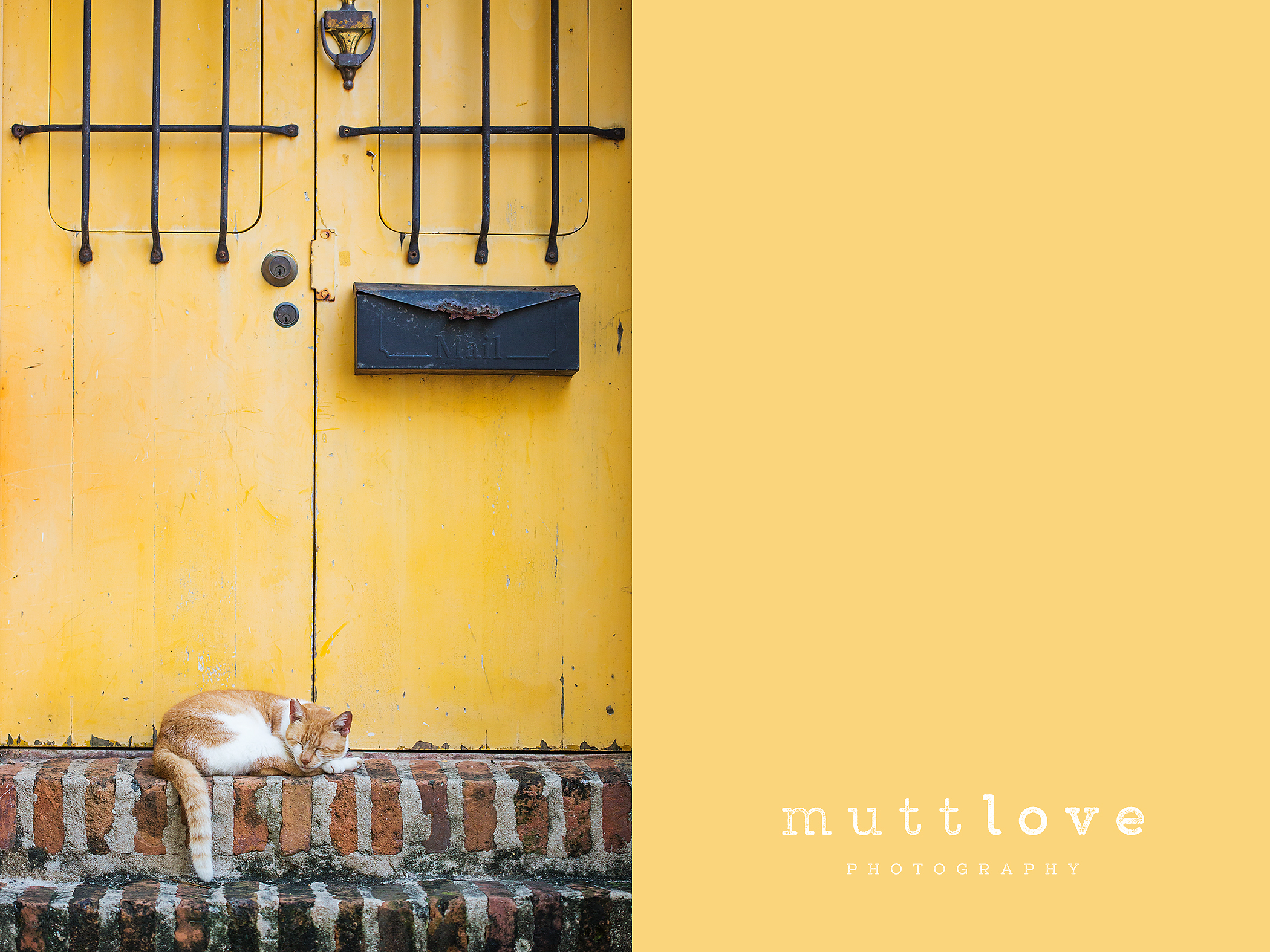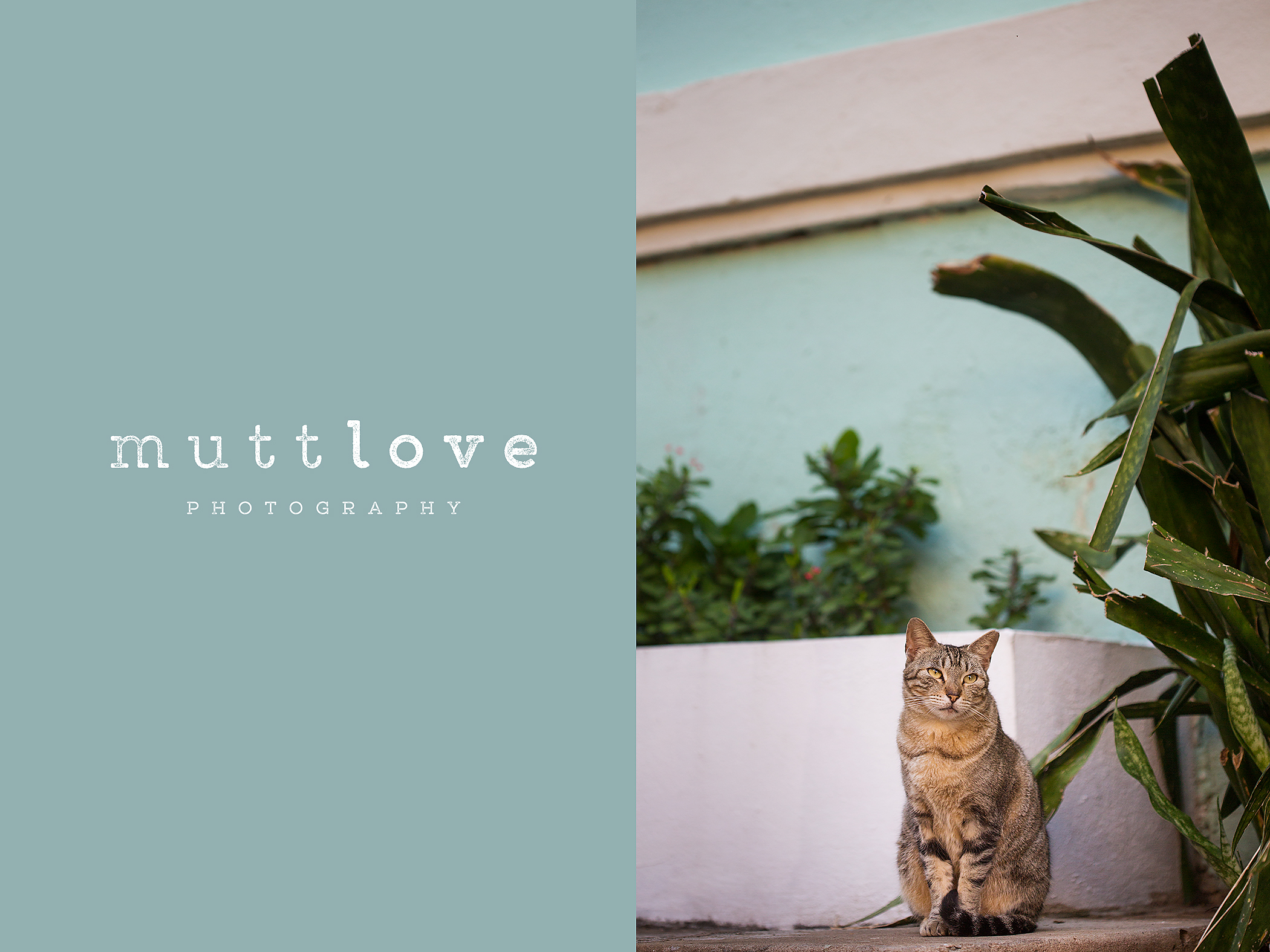I love photography but I also love traveling!! We went on a little adventure to Puerto Rico and stayed a few days in Old San Juan. As I always do when we are somewhere new, I got up at sunrise to go out exploring on my own without the worry of anyone around. It is my time for quiet contemplation and to challenge myself to see things differently. (and I don’t have to worry about boring someone with all my picture taking!). On the first morning I was walking around the streets and noticed a large number of cats roaming around. They appeared to be stray cats but very well fed and content stray cats. There was ample food and water at multiple areas in the Old Town. After we returned home I did a little research and found out a little more info about these beautiful kitties. There is an organization that helps to care for them and has a Trap, Neuter and Release program.
If you take a walk along the Paseo del Morro Recreation Trail (north of the San Juan Gate), you can’t help but notice a colony of cats roaming the sidewalk, hiding in the bushes and sunning themselves on the rocks by the water. This is just one of the 4 colonies of cats around Old San Juan. These are not stray cats, per se, but animals who happily live in the rocks around the harbor.
The cats are a part of the Old San Juan experience, much like the cats and chickens that are a part of the Key West experience. Some of these cats are said to be descendants from the original cats that arrived on the ships when the first Spanish settlers came to the island. But the cats need help to stay healthy and alive. That is where the Save a Gato organization comes into play.
Save a Gato (gato is Spanish for cat) is a volunteer organization that manages the care and feeding of the colonial cats of Old San Juan. Most of the cats around the Paseo del Morro are feral cats, which means that they are not socialized to humans. They are cats that were either born outside and never had human care/contact, or cats that have become accustomed to living without human companionship.
Through an agreement with the National Park Service, Save a Gato provides food, water and medical assistance for these cats. They also control the number of cats in the colony. They do this by the practice of TNR — Trap, Neuter and Release.
They humanly trap the cats, neuter them (and clip the ear for easy recognition), give them their necessary vaccinations (rabies, etc), deworm them, attend to any other medical needs, and then return them to the colony. This practice provides a win/win situation for everyone — the cat population is controlled and so is the rodent population.
I thought that was pretty neat! Here is the collection of images from my exploring! (and some of the beautiful coloured doors, too!)
